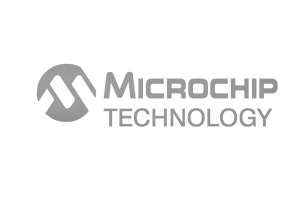ATSAMR21E18A-MF Overview
The ATSAMR21E18A-MF is a high-performance microcontroller that integrates a 2.4 GHz IEEE 802.15.4-compliant transceiver, combining advanced wireless connectivity with a 32-bit ARM Cortex-M0+ core. Designed for low power consumption and robust performance, it suits a wide range of industrial and consumer applications requiring reliable wireless communication. This device supports advanced networking protocols, making it ideal for IoT, smart home, and sensor network implementations. The compact form factor and rich peripheral set enable flexible system design while maintaining energy efficiency. For further details, visit IC Manufacturer.
ATSAMR21E18A-MF Technical Specifications
| Parameter | Specification |
|---|---|
| Core | 32-bit ARM Cortex-M0+ |
| Operating Frequency | 48 MHz |
| Flash Memory | 256 KB |
| SRAM | 32 KB |
| Wireless Standard | IEEE 802.15.4 (2.4 GHz) |
| Power Supply Voltage | 1.8 V to 3.6 V |
| Package | QFN 5×5 mm, 32-pin |
| Operating Temperature Range | -40??C to +85??C |
| On-chip Peripherals | ADC, USART, SPI, I2C, RTC |
| Transmit Power | Up to +5 dBm |
ATSAMR21E18A-MF Key Features
- Integrated ARM Cortex-M0+ Core: Offers efficient 32-bit processing with low power consumption, enabling complex applications while extending battery life in wireless devices.
- Built-in IEEE 802.15.4 Radio Transceiver: Provides seamless 2.4 GHz wireless connectivity, facilitating reliable mesh networking for IoT and sensor networks.
- Robust Memory Configuration: 256 KB of Flash and 32 KB of SRAM support ample code space and data storage, allowing sophisticated firmware development.
- Wide Voltage Range: Operates from 1.8 V to 3.6 V, enhancing compatibility with diverse power supply designs and ensuring stable operation.
- Rich Peripheral Set: Includes ADC, USART, SPI, I2C, and RTC, enabling flexible interfacing with sensors and external components for versatile system integration.
- Compact QFN Package: The small 5×5 mm footprint simplifies PCB design and reduces overall device size, beneficial for space-constrained applications.
- Low Operating Temperature Range: Supports industrial applications with reliable performance from -40??C to +85??C.
ATSAMR21E18A-MF Advantages vs Typical Alternatives
This device delivers a balanced combination of processing power, wireless integration, and low power operation compared to typical microcontrollers with separate radio modules. Its integrated 802.15.4 radio enhances sensitivity and communication reliability, reducing external component count and improving overall system robustness. The wide operating voltage range and extended temperature tolerance further position it as a reliable choice for industrial and commercial applications requiring stable wireless performance and ease of integration.
🔥 Best-Selling Products
-

Texas Instruments BQ24075 Linear Battery Charger IC – 5mm x 4mm QFN Package
-

Texas Instruments INA219 Current Sensor Module – SOIC Package, Precision Monitoring
-

Texas Instruments LM4041 Precision Voltage Reference – SOT-23 Package
-

Texas Instruments OPA2134 Audio Op Amp – Dual, High-Performance, SOIC-8 Package
Typical Applications
- Wireless sensor nodes and mesh networking devices benefit from the low power consumption and integrated radio, supporting long battery life and scalable network topologies.
- Smart home automation systems leverage the device??s compliant wireless interface for secure and reliable control of lighting, HVAC, and security components.
- Industrial monitoring equipment uses the robust temperature rating and flexible peripherals to collect and transmit critical data in harsh environments.
- Asset tracking and remote control devices take advantage of the compact package and integrated radio to minimize form factor while maintaining connectivity.
ATSAMR21E18A-MF Brand Info
This microcontroller series is part of a well-established product line known for combining efficient ARM Cortex-M0+ processing with integrated wireless communication capabilities. The product is engineered to meet the demands of modern IoT and industrial applications, offering developers a flexible platform with proven performance and extensive peripheral support. The brand emphasizes quality, reliability, and ease of integration, making it a preferred choice for engineers designing connected embedded systems.
FAQ
What wireless protocols does the ATSAMR21E18A-MF support?
The device features an integrated 2.4 GHz transceiver compliant with the IEEE 802.15.4 standard. This enables support for protocols such as ZigBee, Thread, and other mesh networking technologies built on top of this standard, ensuring interoperability in wireless applications.
🌟 Featured Products
-

“Buy MAX9312ECJ+ Precision Voltage Comparator in DIP Package for Reliable Performance”
-

QCC-711-1-MQFN48C-TR-03-1 Bluetooth Audio SoC with MQFN48C Package
-

0339-671-TLM-E Model – High-Performance TLM-E Package for Enhanced Functionality
-

1-1415898-4 Connector Housing, Electrical Wire-to-Board, Receptacle, Packaged
What is the power supply voltage range for this microcontroller?
It operates within a voltage range of 1.8 V to 3.6 V. This broad range allows it to be powered by various battery types and regulated supplies, providing flexibility in system design and power management strategies.
How much memory is available for application code and data?
The microcontroller includes 256 KB of Flash memory for program storage and 32 KB of SRAM for data and stack usage. This memory configuration supports complex applications and sufficient runtime data handling for wireless embedded systems.
📩 Contact Us
Can this device operate in industrial temperature environments?
Yes, it is specified to function reliably over an extended temperature range from -40??C to +85??C, making it suitable for industrial and outdoor applications where temperature variations are common.
What peripheral interfaces are integrated on this microcontroller?
The device offers a variety of on-chip peripherals, including Analog-to-Digital Converter (ADC), Universal Synchronous and Asynchronous Receiver-Transmitter (USART), Serial Peripheral Interface (SPI), Inter-Integrated Circuit (I2C), and Real-Time Clock (RTC). These enable versatile sensor interfacing, communication, and timekeeping functions within embedded systems.





